history of Woodburn homestead
our past
Matthew Rankine was born in Ayrshire, Scotland, in 1830. When he was nine years old, he and his family emigrated to Australia on the ‘Fairfield’ voyage with the vessel arriving in Glenelg, Adelaide, in 1839.
The family lived in a house off of West Terrace, Adelaide, for some months, and after the Angas Special Survey was completed, they moved to Angas Plains. Matthew’s father, William, selected land for farming and named it Braemar. Matthew’s brothers, William and John, believed that the Strathalbyn district was suited for the cattle and sheep industry. William elected for a large area in the foothills, named Glenbarr, and John took a mile or so back, designated Blackwood. Matthew began farming on his own account at Woodburn in 1855.
In the first few years after Matthew started farming at Woodburn, he kept a diary, which he retained all his life. It has been handed down for posterity by his descendants, and is now stored in the Strathalbyn National Trust Museum. The diary is a revealing historical document that gives excellent insight into farming in the 1850s. Also, Matthew’s ‘Pioneer Reminiscences’ writings in the Southern Argus (1903) derive much of Strathalbyn’s earliest authentic history. He exemplified the true pioneering spirit of those first Scottish settlers who made Strathalbyn.
In 1858, Matthew married Janet (Jessie) Graham, and the couple had three sons and four daughters, including Melville Rankine (b. 1863), their eldest son. Woodburn Homestead was built by Matthew Rankine in 1864. With the support of farm hands, Matthew constructed fencing with posts and wire, built a stable, bricked in a well, made extensive improvements to the home, built a storehouse, and put a thatched roof on his dairy.
In 1891, Matthew bought Braemar from his younger brother, James, and Melville was left in charge at Woodburn. Melville married Rose Maynard in 1905, with the couple having two children, Melrose (b. 1906) and Graham (1914). Melville was described as a great farmer, polo player and rifle shooter. His main interests were the Agricultural Society and Bureau, and ‘coursing’, a canine sport.
Matthew died in October 1917 at the age of 87 years. Unfortunately, Melville died suddenly in 1920 of septicaemia, aged 57 years. Subsequently, Woodburn was leased to the Rose family until 1936, when it was bought by the Davidson family, of Burnfoot, and the house left empty.

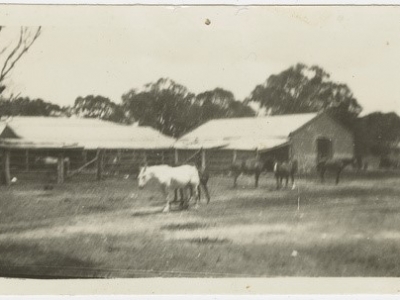
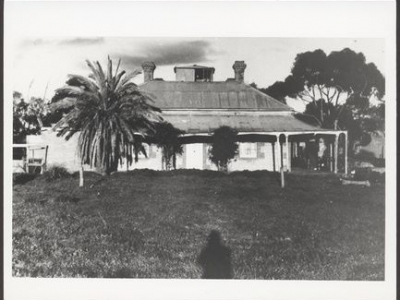



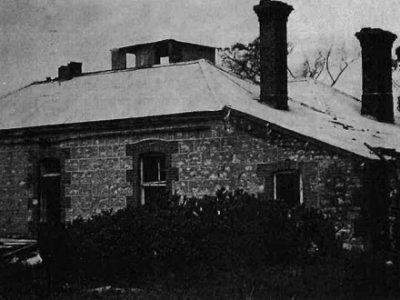
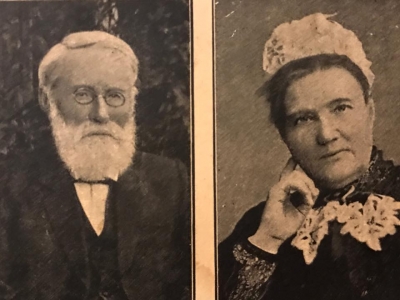



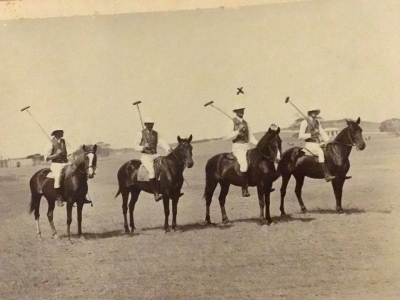
our present and future
Cindy and John Westphalen purchased Woodburn Homestead shortly after they first ventured up the eucalypt-lined driveway in 2017. Cindy, an award-winning wedding specialist and caterer, who for years had worked in wedding venues across Australia with her business, Cindy’s Classic Gourmet, was in the market for a wedding venue that she could make all her own.
Cindy explains, ‘I wanted to drive up a long driveway and come upon a surprise. I never thought I’d actually find it, but then we drove up the driveway here at Woodburn, and this beautiful old house was standing there all alone in this landscape, and I thought, “I’m in Heaven”.’
Since purchasing the property, the Westphalens — joined by their daughter Lucy and son-in-law Peter, and their son Michael and daughter-in-law Bianca — set out to thoughtfully restore and enhance the original house and nearby chaff shed and stables. Together, the family has coaxed that kernel of an idea into a striking destination wedding venue and accommodation.
As you can imagine, there was plenty to be done when the Westphalens took over the property. They launched the ‘Rebuilding History’ program, documenting their progress in restoring Woodburn back to its former glory.

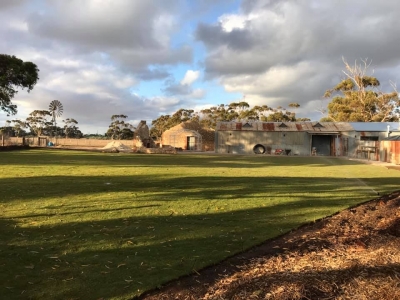
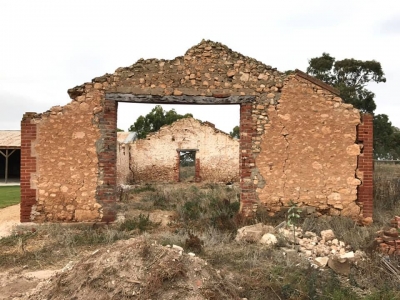
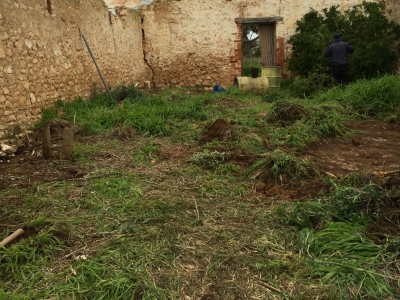



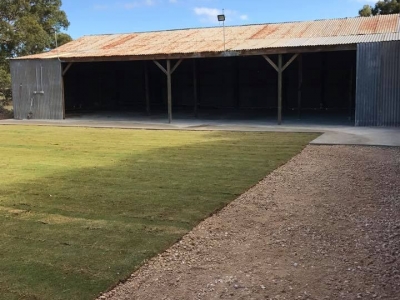


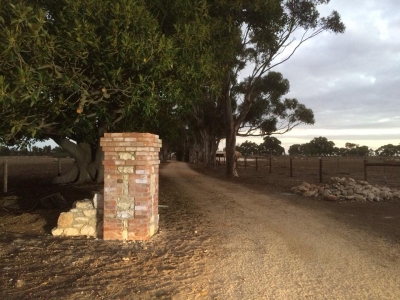



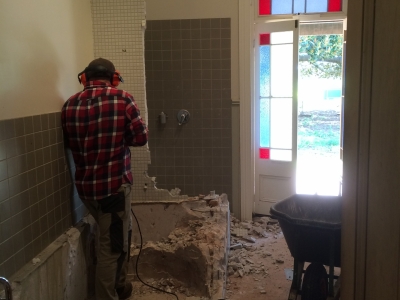

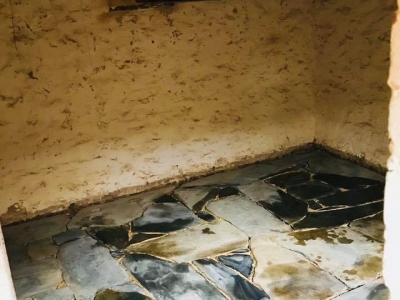

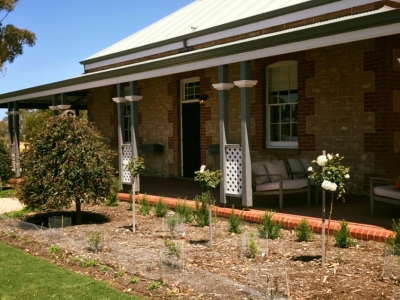
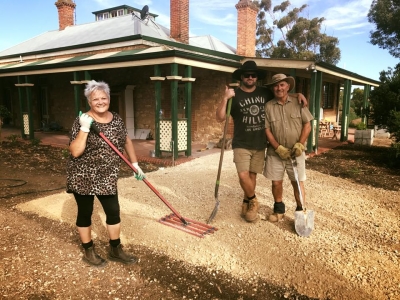
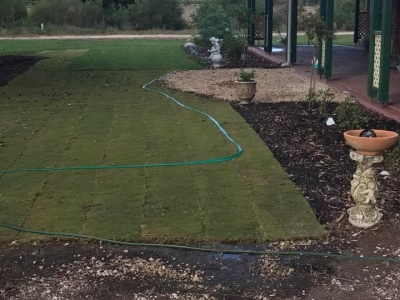
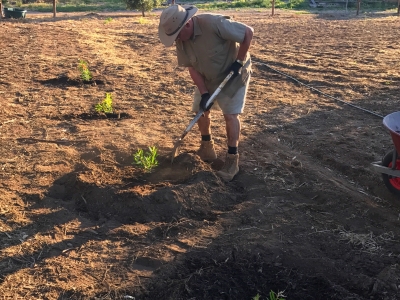
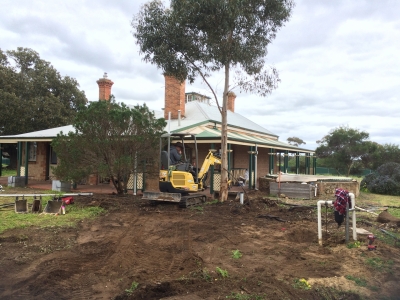
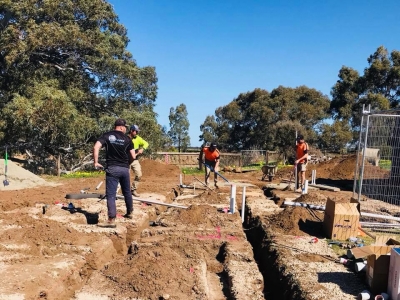
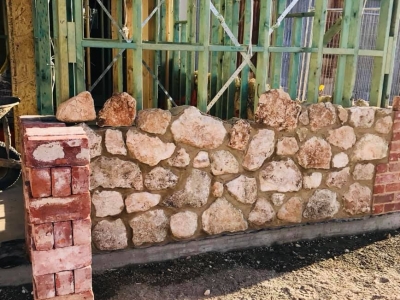
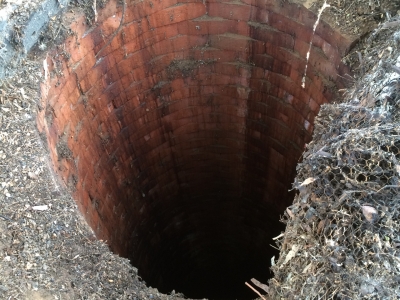
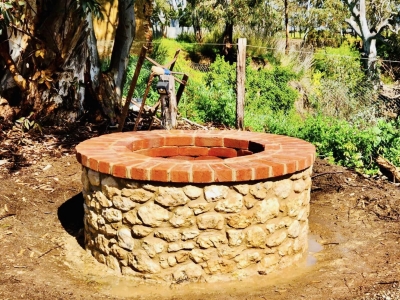
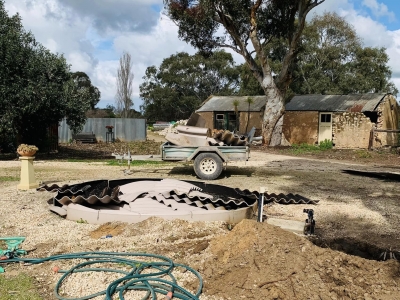

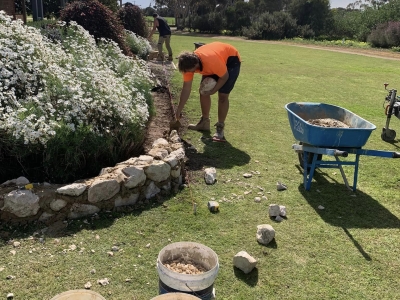

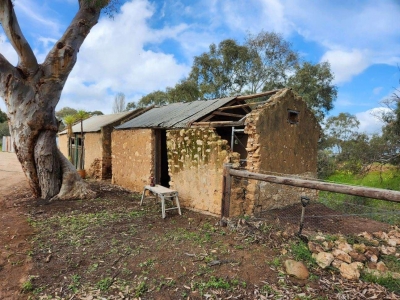
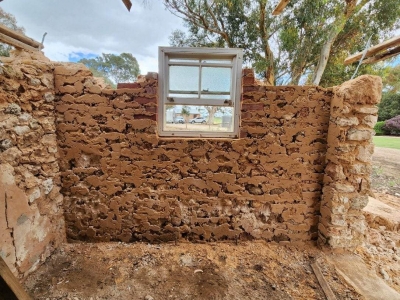
rebuilding history
the homestead
The homestead was completely renovated, with four bedrooms decorated in a heritage style. They’re serviced by three fully-renovated bathrooms and a beautifully appointed country-style kitchen.
Containing timeless architectural features, like fireplaces and leadlight glass, the homestead also offers an unusual treat — a belvedere reached via a steep staircase rewards visitors with 360-degree views across the plains.
homestead lawns
‘The house was surrounded by 220 metres of the ugliest green Colorbond fence you’ve ever seen,’ says Cindy. That fence is now long gone, replaced by a cottage-style garden lovingly planted by Cindy and her late father, Philip Scrivener.
On one side, the Homestead Lawns stretch beyond the plantings of roses, lavender and daisies towards a magnificent Moreton Bay Fig, with a whimsical swing hanging from one of its substantial boughs.
open-air chapel
An overgrown mess when they bought the place, the chaff shed has been expertly revived by stonemason Rick Wheatley and now functions as an open-air chapel. The absence of a roof adds drama, the should-be roofline now a marriage of golden sandstone, red brick and blue sky.
Beyond the far wall, a windmill, repositioned from elsewhere on the property, solemnly keeps watch.
the stables
The interior of The Stables was gutted to open up the space. The corrugated iron exterior and exposed wooden stud work remain, while tools reclaimed from the buildings and nearby paddocks readily remind guests of the building’s former agricultural life. The need for more light was met by installing a large window at one end, a treasure salvaged from a demolition sale.
The lush Stable Lawns now cover what was previously horse yards.
the angas lawns
The Angas Lawns were developed at the back of the property, ideal for large marquee weddings with scenic views of the Angas River and surrounding paddocks.
Nearby, the fireplace is a standout feature, simply perfect for those winter weddings, with ‘Woodburn’ stamped into its mantle.
melrose’s garden
Melrose’s Garden was developed in 2021, named after Matthew Rankine’s granddaughter, Melrose. It is dedicated to Woodburn’s child custodians of the past, present and future.
The garden is enclosed by beautiful black wrought iron gates and a stone wall, of which local stone was sourced to match the stonework of other buildings on the property.
coach house
Only a stone’s throw away from the homestead, the Coach House is a luxurious bridal suite that has been built on the site of the original coach house.
The original building was removed many years ago, and this building, featuring an open-plan entertainment space and a separate bedroom and ensuite, now stands in its place.
Workers’ cottages
Woodburn Homestead was originally a working farm and workers’ cottages were built on the property in 1918. The cottages were initially erected as half buildings for animals, before being added onto for the workers to reside.
The two cottages on the bank of the Angas River are the only two that remain intact. Originally, other similar cottages were situated on the Angas Lawns facing the Angas River.
rankine’s paddock
The olive tree paddock was re-developed in 2022, and is named after Matthew Rankine.
It is understood that when the Rankine family lived at Woodburn Homestead, they hosted polo games on the property. This paddock is specially dedicated to Matthew Rankine’s favourite horse, Vernon, and represents the spirit of all the horses that galloped and roamed on this land.
the homestead
The homestead was completely renovated, with four bedrooms decorated in a heritage style. They’re serviced by three fully-renovated bathrooms and a beautifully appointed country-style kitchen.
Containing timeless architectural features, like fireplaces and leadlight glass, the homestead also offers an unusual treat — a belvedere reached via a steep staircase rewards visitors with 360-degree views across the plains.
homestead lawns
‘The house was surrounded by 220 metres of the ugliest green Colorbond fence you’ve ever seen,’ says Cindy. That fence is now long gone, replaced by a cottage-style garden lovingly planted by Cindy and her late father, Philip Scrivener.
On one side, the Homestead Lawns stretch beyond the plantings of roses, lavender and daisies towards a magnificent Moreton Bay Fig, with a whimsical swing hanging from one of its substantial boughs.
open-air chapel
An overgrown mess when they bought the place, the chaff shed has been expertly revived by stonemason Rick Wheatley and now functions as an open-air chapel. The absence of a roof adds drama, the should-be roofline now a marriage of golden sandstone, red brick and blue sky.
Beyond the far wall, a windmill, repositioned from elsewhere on the property, solemnly keeps watch.
the stables
The interior of The Stables was gutted to open up the space. The corrugated iron exterior and exposed wooden stud work remain, while tools reclaimed from the buildings and nearby paddocks readily remind guests of the building’s former agricultural life. The need for more light was met by installing a large window at one end, a treasure salvaged from a demolition sale.
The lush Stable Lawns now cover what was previously horse yards.
angas lawns
The Angas Lawns were developed at the back of the property, ideal for large marquee weddings with scenic views of the Angas River and surrounding paddocks.
Nearby, the fireplace is a standout feature, simply perfect for those winter weddings, with ‘Woodburn’ stamped into its mantle.
melrose’s garden
Melrose’s Garden was developed in 2021, named after Matthew Rankine’s granddaughter, Melrose. It is dedicated to Woodburn’s child custodians of the past, present and future.
The garden is enclosed by beautiful black wrought iron gates and a stone wall, of which local stone was sourced to match the stonework of other buildings on the property.
the coach house
Only a stone’s throw away from the homestead, the Coach House is a luxurious bridal suite that has been built on the site of the original coach house.
The original building was removed many years ago, and this building, featuring an open-plan entertainment space and a separate bedroom and ensuite, now stands in its place.
workers’ cottages
Woodburn Homestead was originally a working farm and workers’ cottages were built on the property in 1918. The cottages were initially erected as half buildings for animals, before being added onto for the workers to reside.
The two cottages on the bank of the Angas River are the only two that remain intact. Originally, other similar cottages were situated on the Angas Lawns facing the Angas River.
rankine’s paddock
The olive tree paddock was re-developed in 2022, and is named after Matthew Rankine.
It is understood that when the Rankine family lived at Woodburn Homestead, they hosted polo games on the property. This paddock is specially dedicated to Matthew Rankine’s favourite horse, Vernon, and represents the spirit of all the horses that galloped and roamed on this land.

